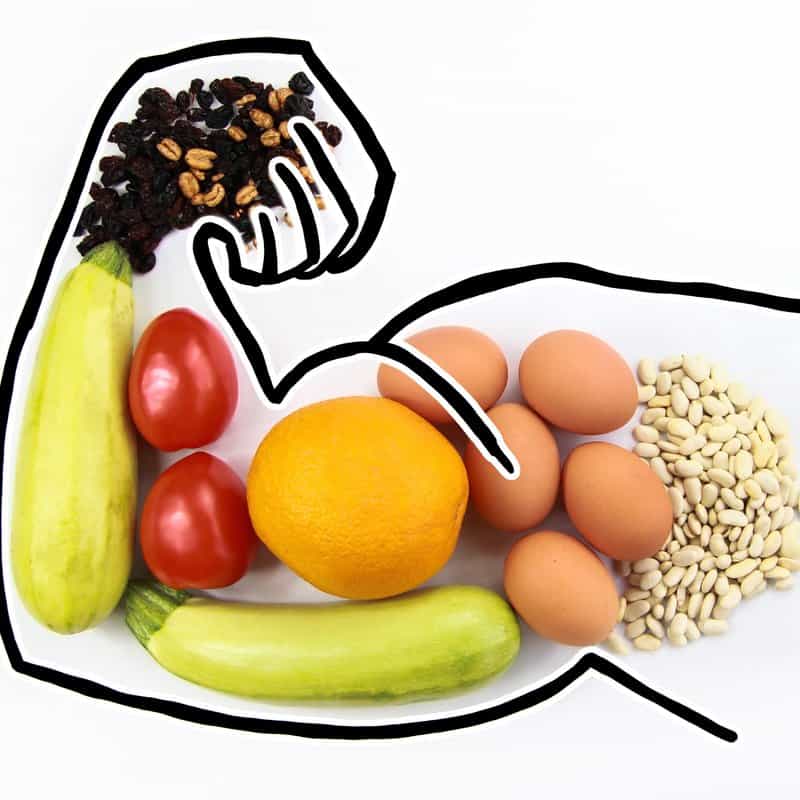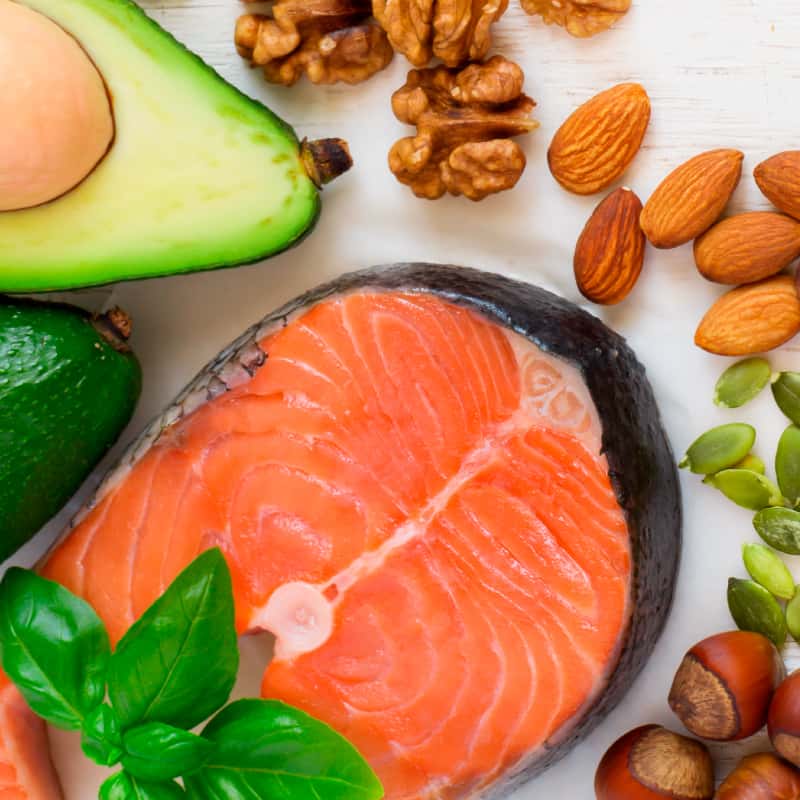This Dr. Axe content is medically reviewed or fact checked to ensure factually accurate information.
With strict editorial sourcing guidelines, we only link to academic research institutions, reputable media sites and, when research is available, medically peer-reviewed studies. Note that the numbers in parentheses (1, 2, etc.) are clickable links to these studies.
The information in our articles is NOT intended to replace a one-on-one relationship with a qualified health care professional and is not intended as medical advice.
This article is based on scientific evidence, written by experts and fact checked by our trained editorial staff. Note that the numbers in parentheses (1, 2, etc.) are clickable links to medically peer-reviewed studies.
Our team includes licensed nutritionists and dietitians, certified health education specialists, as well as certified strength and conditioning specialists, personal trainers and corrective exercise specialists. Our team aims to be not only thorough with its research, but also objective and unbiased.
The information in our articles is NOT intended to replace a one-on-one relationship with a qualified health care professional and is not intended as medical advice.
How Many Calories Should You Eat in a Day?
October 16, 2024

Calories — specifically daily calorie intake — are always a hot topic. “How many calories should I eat a day?” is a common question for anyone seeking to lose weight, for example.
It’s a tricky question to answer, seeing as daily calorie intake depends on a number of factors, including height, weight, activity level, gender, age, diet and so much more. It also depends on your goals.
For instance, if you’re overweight and looking to lose weight and/or extend lifespan, studies indicate cutting calories — and consuming the right types of calories — may help you achieve those goals. One 2023 study even stated that our aging would slow by 2 percent to 3 percent if we lowered the number of calories we eat by 25 percent.
Conversely, if you’re underweight and looking to gain weight, you’ll naturally want to increase your daily calorie intake.
Let’s examine more about our daily calorie intake needs.
How to calculate daily calorie intake
Calculating your daily calorie intake depends on many factors, such as gender, height, activity level and age — among other things, such as health issues. You can use this calorie calculator.
To determine how many calories you need, you need to consider how much energy is being used. Also, it varies based on whether you want to lose weight, gain weight or maintain your weight.
You can also check out a body mass index (BMI) chart to obtain more information, though it can be misleading as not everyone’s body composition matches the weight on the chart.
For the basics, you want to know what your resting energy is. Resting energy is the amount of energy needed to live and breathe. It’s what keeps the body and its organs working properly and is responsible for about 60 percent to 75 percent of your caloric expenditure. Digesting food takes about 10 percent, and physical activity accounts for about 25 percent.
The Harris-Benedict equation is a popular tool used by many nutrition and health professionals to calculate the caloric requirements of individuals based on sex, age, height, weight and level of physical activity. Here are the equations by gender:
- Male: 66 + (6.2 × weight in pounds) + (12.7 × height in inches) – (6.76 × age in years)
- Female: 655.1 + (4.35 × weight in pounds ) + (4.7 × height in inches) – (4.7 × age in years)
Then, based on expended energy (physical activity/lifestyle), multiply the equations by 1.2 for sedentary people, 1.3 for moderately active people and 1.4 for active people.
Keep in mind that this is an estimate. It can be different for each person based on other factors, such as any health conditions a person may be enduring. A health care professional who specializes in nutrition can better help you understand what is best for you.
One pound of fat equals 3,500 calories. If we base it on this number, you need to burn off 500 to 1,000 calories more per day to lose one to two pounds per week.
A doctor or an online calorie calculator can help you determine your daily caloric needs, but again, it is going to vary based on each individual. You need to give consideration to the factors regarding your particular lifestyle.
For example, if you eat 2,000 calories per day but add one hour of exercise per day that burns about 500 calories, you may lose one pound a week.
Calorie averages
Without a calculator or chart, how many calories should most people eat on average?
If you seek to lose weight, you need to create a calorie deficit so you take in fewer calories than your norm or you exercise more to burn additional calories. An effective strategy can be doing both, such as eating less while exercising more, without overdoing it. (It’s important that you consume enough nutrients, including when you’re trying to lose weight.)
Examining the 2020–2025 Dietary Guidelines for Americans, here are the daily calorie intake recommendations:
Females*:
- 19–30 years old: 2,000–2,400 calories
- 31–60 years old: 1,600–2,200 calories
- 61+ years old: 1,600–2,000 calories
*Note that these estimates don’t pertain to women who are pregnant or nursing, when more calories are necessary.
Males*:
- 19–30 years old: 2,400–3,000 calories
- 31–60 years old: 2,200–3,000 calories
- 61+ years old: 2,000–2,600 calories
Children:
- Males 2–4 years old: 1,000–1,600 calories
- Females 2–4 years old: 1,000–1,400 calories
- Males 5–8 years old: 1,200–2,000 calories
- Females 5–8 years old: 1,200–1,800 calories
- Males 9–13 years old: 1,600–2,600 calories
- Females 9–13 years old: 1,400–2,200 calories
- Males 14–18 years old: 2,000–3,200 calories
- Females 14–18 years old: 1,800–2,400 calories
Note that people who are very active or have certain health conditions may need more calories on a daily basis. In addition, the calories you need within these ranges will also depend on your height and weight.
How to reduce calorie intake
1. Eat more protein and fiber
Studies show that controlled calorie intake in association with a moderately high protein intake can be both an effective and practical weight-loss strategy. Protein also functions to increase satiety to a greater extent than carbohydrates or fats, helping prevent overeating and snacking.
Studies indicate that a high-fiber diet helps prevent obesity, and fiber intake is inversely associated with body weight and body fat. If your goal is to reduce to your weight, fiber can help since it makes you feel fuller after eating and can prevent snacking or overeating at your next meal. Studies show that the addition of a high-fiber diet generally decreases food intake overall and, therefore, over time can contribute to a lower body weight.
2. Consume more water and eliminate high-calorie drinks
While the general recommendation is to drink eight 8-ounce glasses of water per day (known as the “8×8 rule”), this may not be adequate for everyone. And many people come up short, and may confuse thirst for hunger and end up eating more calories as a result.
Drinking water before meals can help you feel fuller, which may reduce overall calorie intake. This is because water can take up space in the stomach, sending signals to the brain that you are full, thus reducing hunger.
In addition, replacing high-calorie beverages, such as sodas and juices, with water can significantly reduce calorie intake. Water is calorie-free, making it an excellent choice for those looking to cut down on liquid calories.
3. Be a mindful eater
With practice, mindful eating can be easy and be a part of your daily wellness routine. Similar to intuitive eating, when you practice mindful eating, you come to understand your own eating habits by recognizing reoccurring thinking patterns, emotional moods, and various types of hunger levels and cravings that can affect your appetite based on your emotions.
There are a few ways to help control the amount of calories you eat and practice mindful eating, and by making this a part of your daily routine, you can really make a difference in your health and weight.
4. Employ portion control
Portion out your food in advance, and don’t go back for seconds. Learn portions. Go through the exercise of weighing and measuring everything you eat and drink for a week. You will need to read labels to understand what a serving is, and keep in mind that sometime half a serving is plenty, especially if pairing it with a few other foods.
5. Use a food tracker
Evidence shows that tracking your food can be an amazing tool to help manage your goals. It works by bringing awareness to your eating routine. Over time, you can learn about your food to the point where you may not have to journal.
A study showed that women who tracked their food intake, practiced self-monitoring, cooked home-prepared meals and consumed meals at regular time frames had improved weight loss goals over a 12-month period among postmenopausal women.
Understanding the number of calories in food is important to understanding just how much you are consuming. It varies with all foods so using a food tracker is a great way to learn. Over time, you may not need the food tracker.
Of course, reading labels is key, and consuming fresh fruits and vegetables makes a big difference versus processed foods. However, tracking is like keeping a food diary and can greatly benefit anyone who is seeking a wellness lifestyle, whether for personal reasons or health reasons.
6. Choose nutrient-dense foods
Nutrient-dense foods — such as steamed broccoli, leafy greens, nuts and seeds — fill you up far better than a bag of potato chips while giving you a ton of nutritional benefits. Consider a salad before the main meal, but watch the dressing. Keep it simple and opt for small amount of olive oil and balsamic vinegar, try lemon juice and black pepper, or even opt for salsa as a dressing.
Think nutrition — for everything you consider eating, take a moment to evaluate whether it is a good choice or not. In most cases, it is pretty straightforward.
7. Eat slowly
We have long been told that it takes a little time — maybe about 20 minutes — for the brain to get the signal that you are full. If you eat your entire meal or snack in five minutes, of course you will be left feeling hungry.
A study out of the Netherlands used a fork that vibrated when eating too fast (i.e., more than one bite per 10 seconds). While further evaluation is needed since the study was unable to clearly indicate its ability to provided satiation by eating more slowly, the fork may be a tool to help reduce eating rate. Overall, eating more slowly is a useful practice in mindful eating. It allows you to enjoy your food far more while getting you to a place of feeling full.
8. When it is time to stop eating — stop eating
You have already made the decision to eat a certain amount of certain foods. This is a simple trick and can be used at every meal. Kitchen is closed.
When is the best time to eat, and when is the best time to avoid eating? One great rule of thumb is to eat only when you are hungry. Allowing your food to digest from the previous meal before consuming more food provides an opportunity for the body to properly digest your food and use it for nutritional needs before throwing it back into a digestive process. Also, it allows for time for the body to burn fat for fuel.
Research shows that as obesity and metabolic diseases are on the rise, we need to better understand the relationship between circadian rhythms and their influence on metabolic processes. This is the time the body optimizes energy use and storage. According to studies, food intake should be synchronized with the suprachiasmatic nucleus. The suprachiasmatic nucleus or nuclei (SCN) is a very small region of the brain in the hypothalamus and is responsible for controlling circadian rhythms. A loss of synchronization between mealtime and the SCN may promote obesity due to metabolic disturbances.
9. Calories in, calories out
Many studies suggest that calories in/calories out (such as in the CICO diet) matters. Eating late at night may or may not cause problems for you, but it is common to overdo it with empty calories, such as cookies and other sweets that contain a ton of sugar and calories.
Again, this is where a calorie calculator app can help, to help pinpoint your ideal calorie count for the day and take into account your activity. It can even help motivate you to work out, for then you have extra calories in your budget.
10. Count your macros
Learning how to count macros can also help you reach your ideal calorie count. With one gram of fat worth nine calories while one gram of carbohydrate contains four calories, it can affect how much you eat of these macronutrients at different meal times.
How many grams of carbs per day? How many fat grams per day? How many grams of protein per day? That is up to you and what kind of eating plan you pursue, such as carb cycling. Too many carbohydrates, for example, can spike blood sugar and even cause overeating.
11. Reduce empty calories
Though some studies indicate that reducing calories will only help weight stay off for a short period of time, calories do matter. What may be a better choice is to understand not only how many calories you are putting in your body, but the nutritional density of those calories. It all works hand in hand, whether it is for healthy weight or just for better health in general.
An example of high-calorie choices that do not foster good health and may simply add on weight are beverages. According to research published in the American Journal of Clinical Nutrition, packaged beverages represent 32 percent to 48 percent of daily calorie intake for most Americans thanks to their sugar content.
Empty calories applies to food that provides energy but contains little to no nutrition. According to the USDA and Harvard Health, most people eat way too many empty calories, and this can add to poor health and weight gain.
Research was conducted in a population of 17,444 children and adults by the 2009–2012 National Health and Examination Survey. The study replaced the usual American snacks with a tree nut mix. The results indicate that by replacing between-meal snacks with healthier choices, such as tree nuts or almonds, diets were more nutrient-dense and therefore provided a healthier diet overall.
12. Always use a dish to eat versus grazing
Going to a party and grazing all night long can result in the consumption of way too many carbs because you have no idea how much you are eating. That nibbling can add up. Plus, dipping into bags of empty-calorie chips will lead to an empty bag and frustration. Portion it out on a small plate, or skip the chips altogether.
Precautions
Please keep in mind that your daily calorie intake is different for everyone, and it’s best to consult your healthcare professional in regard to how many calories you should eat per day.
Restricting calories should be done with caution, especially if you have any health issues, such as diabetes, or are highly active. Make sure you have full awareness of your plan with the assistance of a doctor or health professional, especially if you are pregnant or breastfeeding.
Overall, we don’t recommend that you go too low in calories, as that can cause other health concerns. The so-called military diet is one such fad diet.
Final Thoughts
- Daily calorie intake depends on a number of factors, including height, weight, activity level, gender, age, diet and so much more. It also depends on your goals.
- If you’re looking to lose weight or extend life, studies indicate cutting calories — and consuming the right types of calories — may help you achieve those goals. Counting your macros is also a good idea.
- If you’re underweight and looking to put on some pounds, you’ll naturally want to increase your daily calorie intake.
- To determine how many calories you need, you need to consider how much energy is being used.
- Resting energy is the amount of energy needed to live and breathe. It’s what keeps the body and its organs working properly and is responsible for about 60 percent to 75 percent of your caloric expenditure. Digesting food takes about 10 percent, and physical activity accounts for about 25 percent.
- So here’s the deal. Eat mindfully. Know what you are putting in your body and what its purpose is.
- If you want to lose weight, you will need to consider the amount of calories you are putting in your body as well as the type of calories based on your weight and level of fitness. A serving of broccoli is going to take you further than a serving of French fries. Additionally, you may have to consider the time of day should you choose a fasting approach.






